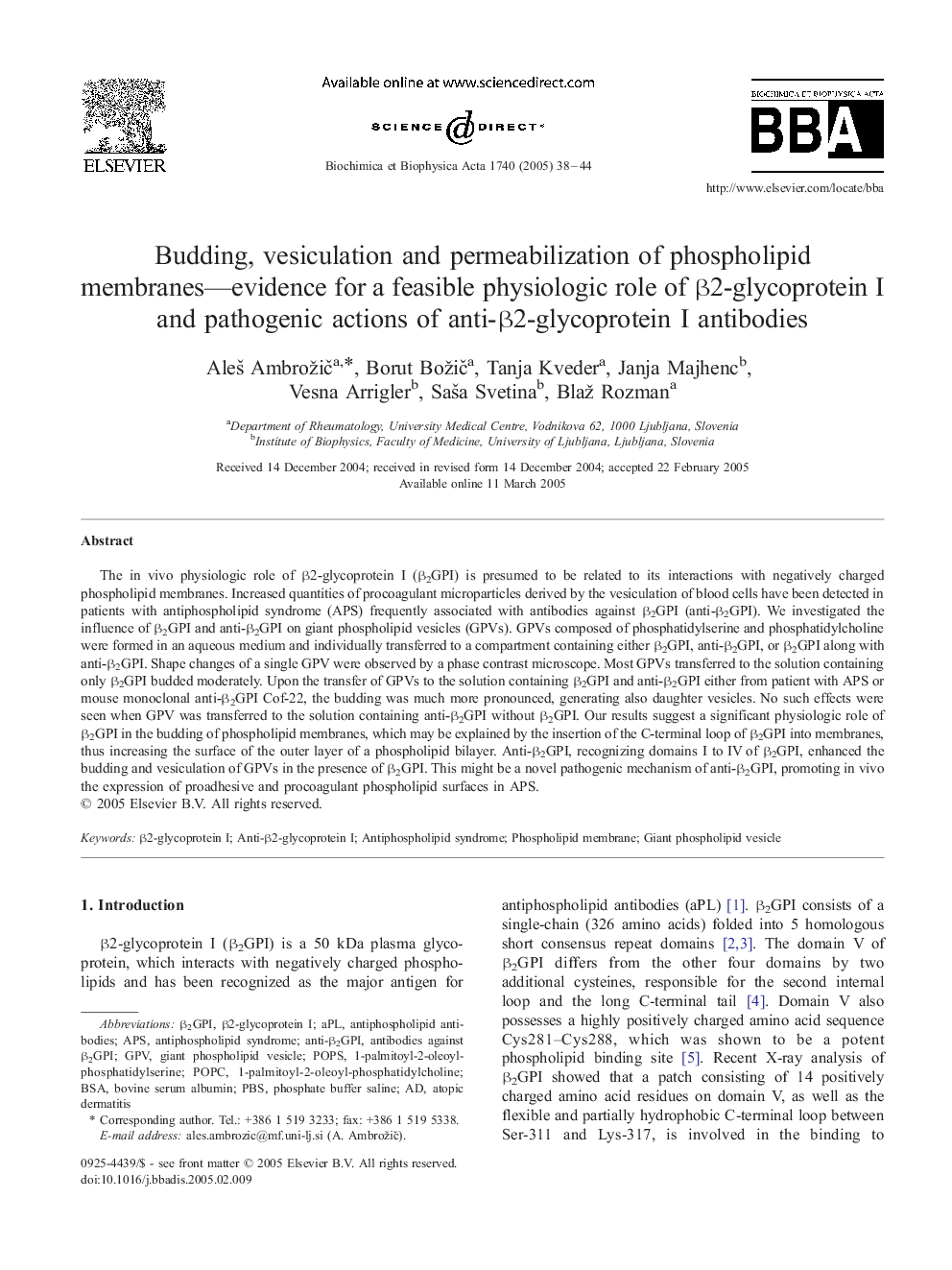| Article ID | Journal | Published Year | Pages | File Type |
|---|---|---|---|---|
| 9879497 | Biochimica et Biophysica Acta (BBA) - Molecular Basis of Disease | 2005 | 7 Pages |
Abstract
The in vivo physiologic role of β2-glycoprotein I (β2GPI) is presumed to be related to its interactions with negatively charged phospholipid membranes. Increased quantities of procoagulant microparticles derived by the vesiculation of blood cells have been detected in patients with antiphospholipid syndrome (APS) frequently associated with antibodies against β2GPI (anti-β2GPI). We investigated the influence of β2GPI and anti-β2GPI on giant phospholipid vesicles (GPVs). GPVs composed of phosphatidylserine and phosphatidylcholine were formed in an aqueous medium and individually transferred to a compartment containing either β2GPI, anti-β2GPI, or β2GPI along with anti-β2GPI. Shape changes of a single GPV were observed by a phase contrast microscope. Most GPVs transferred to the solution containing only β2GPI budded moderately. Upon the transfer of GPVs to the solution containing β2GPI and anti-β2GPI either from patient with APS or mouse monoclonal anti-β2GPI Cof-22, the budding was much more pronounced, generating also daughter vesicles. No such effects were seen when GPV was transferred to the solution containing anti-β2GPI without β2GPI. Our results suggest a significant physiologic role of β2GPI in the budding of phospholipid membranes, which may be explained by the insertion of the C-terminal loop of β2GPI into membranes, thus increasing the surface of the outer layer of a phospholipid bilayer. Anti-β2GPI, recognizing domains I to IV of β2GPI, enhanced the budding and vesiculation of GPVs in the presence of β2GPI. This might be a novel pathogenic mechanism of anti-β2GPI, promoting in vivo the expression of proadhesive and procoagulant phospholipid surfaces in APS.
Related Topics
Life Sciences
Biochemistry, Genetics and Molecular Biology
Ageing
Authors
AleÅ¡ AmbrožiÄ, Borut BožiÄ, Tanja Kveder, Janja Majhenc, Vesna Arrigler, SaÅ¡a Svetina, Blaž Rozman,
